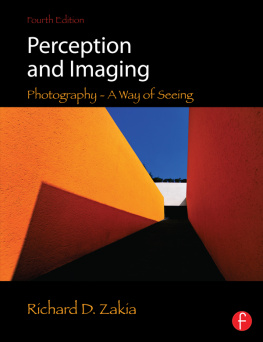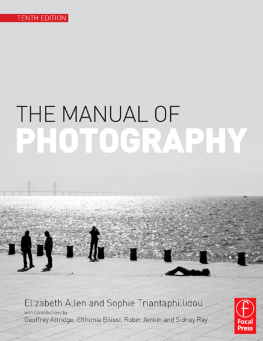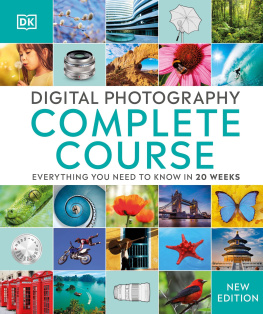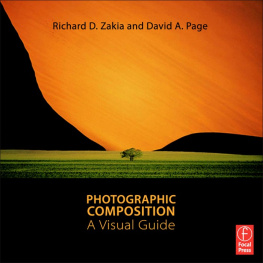Perception and Imaging
No copyright is claimed in any of the advertisements produced herein. The copyright for each advertisement, which is subject to copyright, resides in the creator of the advertisement or the assignee thereof. Use in this textbook is under Code 107 of the United States Copyright Law.

Fourth edition published 2013
by Focal Press
70 Blanchard Road, Suite 402, Burlington, MA 01803
Simultaneously published in the UK
by Focal Press
2 Park Square, Milton Park, Abingdon, Oxon OX14 4RN
Focal Press is an imprint of the Taylor & Francis Group, an informa business
2013 Richard D. Zakia
The right of Richard D. Zakia to be identified as author of this work has been asserted by him in accordance with sections 77 and 78 of the Copyright, Designs and Patents Act 1988.
All rights reserved. No part of this book may be reprinted or reproduced or utilised in any form or by any electronic, mechanical, or other means, now known or hereafter invented, including photocopying and recording, or in any information storage or retrieval system, without permission in writing from the publishers.
Notices
Knowledge and best practice in this field are constantly changing. As new research and experience broaden our understanding, changes in research methods, professional practices, or medical treatment may become necessary.
Practitioners and researchers must always rely on their own experience and knowledge in evaluating and using any information, methods, compounds, or experiments described herein. In using such information or methods they should be mindful of their own safety and the safety of others, including parties for whom they have a professional responsibility.
Product or corporate names may be trademarks or registered trademarks, and are used only for identification and explanation without intent to infringe.
First edition published by Elsevier 1997
Third edition published by Elsevier 2007
Library of Congress Cataloging in Publication Data
A catalog record has been applied for
ISBN: 978-0-240-82453-6 (pbk)
ISBN: 978-0-240-82468-0 (ebk)
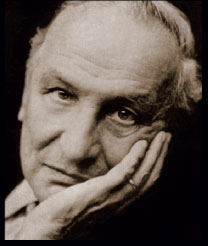
Dr. Rudolf Arnheim,
19042007
To Professor Rudolf Arnheim
A dear friend, colleague, and mentor who
kept the spirit of Gestalt perception alive
in the twentieth century
To Irving Pobboravsky,
brother of the heart
I eagerly await new concepts and processes. I believe that the electronic image will be the next major advance. Such systems will have their own inherent and inescapable structural characteristics, and the artist and functional practitioner will again strive to comprehend and control them.
Ansel Adams, 1981

Photograph by Julieanne Kost.
Preface to the Third Edition
The first edition of this book, published in 1997, began with a handwritten quote by Henri Cartier-Bresson:

This 1978 statement by Henri Cartier-Bresson is worth considering, particularly with the increasingly sophisticated imaging technology currently available. Regardless of the medium used, how high tech it might be, and with what speed images can be manipulated, it is the human factor that is important. Pictures, regardless of how they are created and recreated, are intended to be looked at. This brings to the forefront not the technology of imaging, which of course is important, but rather what we might call the eyenology (knowledge of the visual processof seeing).
What is known about vision and the visual process is overwhelming; what is directly applicable to pictures is not, and this is what this book presents as an introduction. We take the eye and how we see for granted. But scientists studying the visual process and working in cognitive science recognize its complexity. Our visual process is unique and how it functions is still somewhat of a mystery.
I trust that the creative eye will continue to function, whatever the technological innovations may develop.
Ansel Adams, 1983
This new edition maintains the integrity of the earlier edition and extends it to include the other visual principles important to photographers and other imagers, regardless of the medium (including cinema, video computer animation, graphic design, web design, and multimedia) used to capture, manipulate, reproduce, or display visual information.
The concepts in each chapter have been selected on the basis of their relevance to the perception of visual images and information. This book is an attempt to share with you, regardless of the technology you use, what I have over many years gleaned from a historical and contemporary parade of others having a like concern. The technology will continue to change, but the process of visual perception will remain essentially the same.
In this third edition, I begin with a reminder that in photography as in other disciplines, we all start out as amateurs. To underscore this, and at the very beginning of the book, I have included an early 1911 photograph by Edward Weston that he submitted in a photographic contest. To his possible disappointment or pleasure, he managed to receive only an honorable mention. And, as we all know, he went on to become one of the greatest photographers of all time. This should provide encouragement for all of us and especially for students formally studying photography. In the front matter, I have also included two quotes by another great photographer, Ansel Adams, who as early as 1981 had the vision to see the importance of digital imaging; what he referred to at the time as the electronic age.
There are many more color photographs and ads in this new edition as well as some sidebar color images and additional quotes. , which contains some historic ads that are worth looking at and studying as well as an example of the possible origin of print ads as we know themEmblems.
Throughout the preparation of this book, considerable attention has been directed toward having the words and pictures support each otherword text and picture text as one text. As far as possible and practical, the layout of the book addresses this concern. The quotations included along the side of each page are intended to serve as visual sound bites to support the information in the text.
Please note that whenever the word photographer is used in the text, it is used in a collective sense to include the multiplicity of ways image practitioners capture, create, and manipulate visual images.
Notes
. Henri Cartier-Bresson. A catalogue of 390 of his photographs selected by him for the Scottish Arts Council Exhibition arranged in association with the Victoria Albert Museum in 1978. The introduction is a handwritten statement by Cartier-Bresson titled, LImaginaire daprs Nature.
Photographs mentioned in this book that are not shown can be seen on the Internet using search engines such as Google or Yahoo. (Type in the photographers name and click on Images.)
Preface to the Fourth Edition

